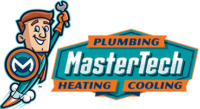
Air Handler

You’re cozily tucked in your home during the dead of winter, and suddenly, your heating system decides it’s time for a break. Or perhaps, during the sweltering summer months, your cooling system sputters, leaving you in a stifling sweat. These situations can turn your comfort zone into a discomfort zone in the blink of an eye. Luckily, the dependable air handler services by MasterTech Plumbing, Heating and Cooling are only a phone call away.
Air Handler Problems Homeowners Can Encounter
Homeownership comes with its fair share of surprises, and one of the most unwelcome ones is an unexpected breakdown of your heating or cooling system. In Columbia, where the weather can be unpredictable, having a reliable climate control system is crucial. It’s not just about staying comfortable; it’s also about ensuring your family’s safety and well-being.
When your HVAC system fails, it can lead to discomfort, health concerns, and increased energy bills. This is where air handler services come to the rescue.
Why We Are the Go-To Company
When it comes to air handler maintenance, repair, or replacement, MasterTech Plumbing, Heating and Cooling is the name you can trust. Our commitment to excellence and customer satisfaction sets us apart.
Our Service Process
At MasterTech, we follow a systematic service process to ensure your home’s climate control system is in top shape:
Why Trust Our Local Experts
MasterTech Plumbing, Heating and Cooling isn’t just a business; we’re part of the Columbia community. We understand the unique challenges homeowners face in our area and are dedicated to making your living environment comfortable and safe.
Advantages of Our Professional Service
Choosing our air handler services offers numerous benefits:
Don’t let a malfunctioning climate control system disrupt your comfort; contact us today to schedule your air handler assessment and take the first step toward a more comfortable and worry-free home.
FAQs on Air Handlers
An air handler is a vital component of a heating, ventilation, and air conditioning (HVAC) system. Its primary function is to circulate conditioned air throughout a building. Here are its key features and functions:
– Components: An air handler typically consists of a blower, a heating or cooling element (like a coil or heat exchanger), filters, dampers, and controls.
– Air Circulation: The blower in the air handler moves air from the building through the return ducts, passes it over the heating or cooling element, and then distributes the conditioned air through the supply ducts to various rooms.
– Filtering: Air handlers often contain filters that help remove dust, allergens, and contaminants from the air, contributing to improved indoor air quality.
– Temperature Control: Depending on the system, the air handler can heat or cool the air as needed to maintain the desired indoor temperature.
– Humidity Control: Some air handlers include humidifiers or dehumidifiers to control indoor humidity levels.
Air handlers are typically located indoors, commonly in basements, utility rooms, or attics. They play a crucial role in maintaining comfort, air quality, and energy efficiency within a building, working in tandem with the outdoor condenser or heat pump unit to provide conditioned air year-round.
No, an air handler is not the same as an AC (air conditioning) unit, but they are closely related components within a complete HVAC (heating, ventilation, and air conditioning) system. Here’s how they differ:
– Air Handler: An air handler is an indoor unit responsible for circulating conditioned air throughout a building. It contains a blower, filters, coils for heating or cooling, and controls. While it’s a crucial part of the HVAC system, an air handler alone cannot provide cooling or heating; it requires a separate source of cold or hot air, such as an AC unit or a furnace.
– AC Unit: An AC unit, or air conditioner, is an outdoor unit that cools the air. It contains a compressor, condenser coils, and an expansion valve. The AC unit works in conjunction with the air handler to remove heat from indoor air and deliver cool, conditioned air into the building.
The air handler and AC unit are distinct but interdependent components of an HVAC system. The air handler distributes conditioned air, while the AC unit is responsible for cooling that air. Together, they ensure comfortable indoor temperatures and air quality.
In a house, an air handler plays a crucial role in the HVAC (heating, ventilation, and air conditioning) system. Its primary function is to circulate conditioned air throughout the building. Here’s what an air handler does:
– Air Circulation: The air handler contains a blower or fan that draws air from the indoor environment through return ducts. This air is then passed over coils or heat exchangers, which can either heat or cool it, depending on the system’s mode.
– Temperature Control: In conjunction with the HVAC system, the air handler helps control indoor temperatures by either heating or cooling the air before distributing it throughout the house.
– Air Filtration: Many air handlers are equipped with filters that remove dust, allergens, and particles from the air, enhancing indoor air quality.
– Humidity Control: Some air handlers include humidifiers or dehumidifiers to adjust indoor humidity levels for comfort and health.
– Distribution: The conditioned air is then distributed to various rooms through supply ducts, maintaining a comfortable and consistent temperature throughout the house.
An air handler serves as the heart of the HVAC system, ensuring that conditioned air is efficiently circulated, filtered, and distributed to maintain a comfortable and healthy indoor environment in your home.
No, an air handler is not the same as a compressor in an HVAC (heating, ventilation, and air conditioning) system. These are two distinct components that serve different functions:
– Air Handler: An air handler is an indoor unit responsible for circulating conditioned air within a building. It typically contains a blower or fan, coils for heating or cooling, filters, and controls. Its primary role is to move air from the indoor environment, condition it by either heating or cooling, filter it, and then distribute it through supply ducts to various rooms.
– Compressor: The compressor, on the other hand, is a crucial part of the outdoor unit in an air conditioning or heat pump system. Its main function is to compress and circulate the refrigerant, which plays a central role in the heat exchange process. By compressing the refrigerant gas, it raises its temperature, enabling it to release heat outside (cooling) or absorb heat from the outside (heating), depending on the mode of the HVAC system.
The air handler handles indoor air circulation and conditioning, while the compressor deals with the refrigerant’s compression and heat exchange process in the outdoor unit of the HVAC system.



